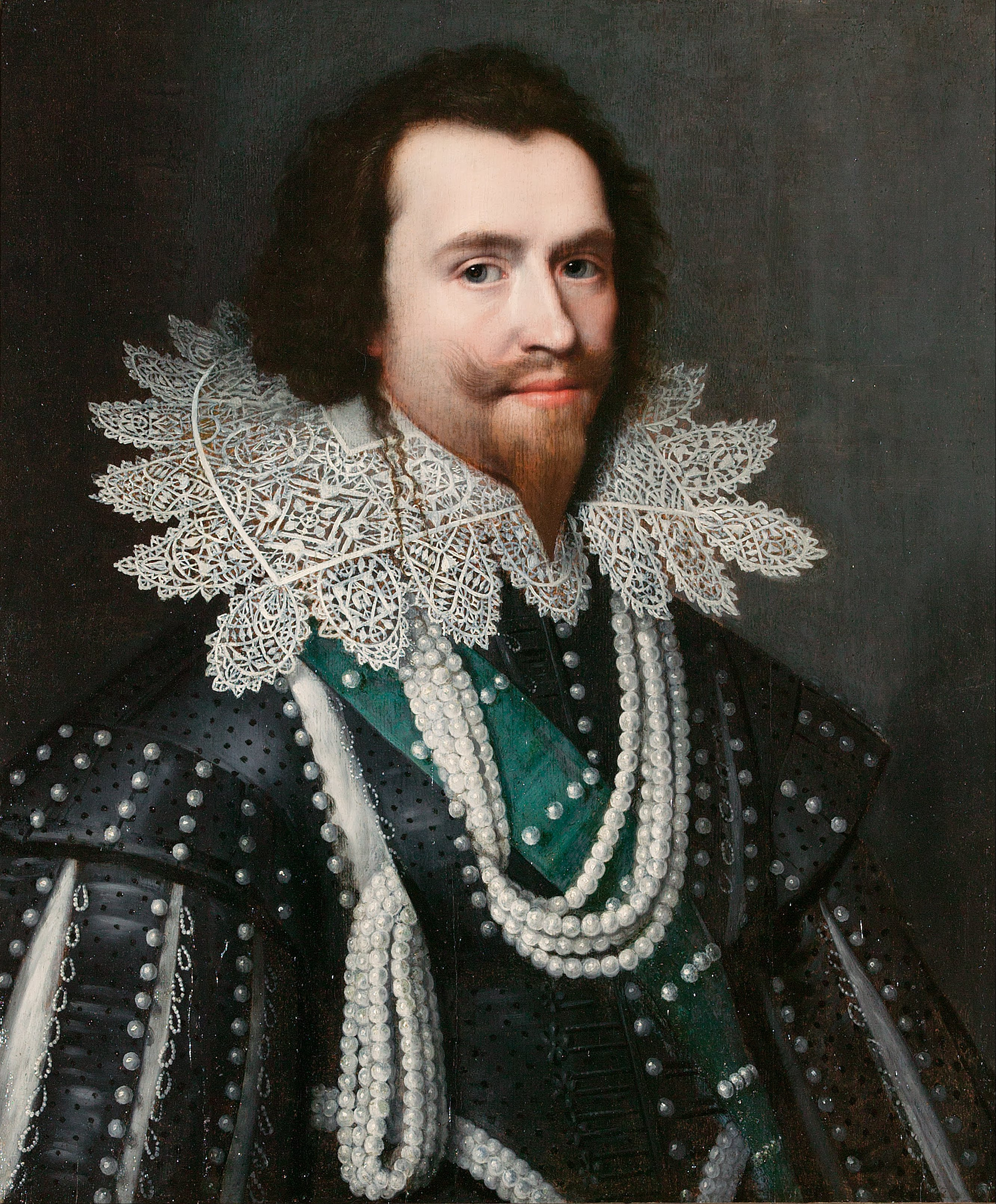Those who watched the recent BBC programme
where a portrait of the Duke of Buckingham was identified as having been
painted by Rubens in 1625 – and even those who didn’t, may be interested in
this contemporary report of what Buckingham wore when he went on King Charles I’s
behalf to Paris in 1625. The portrait to the right is not the Rubens portrait
but one of the same date by Michiel J. van Miereveld,
now in the Art Gallery of South Australia.
When James I died in March 1625 negotiations were already
underway for a marriage between Charles and Princess Henrietta Maria of France.
The marriage, with the Duc de Chevreuse (Claude
de Guise) acting as proxy for Charles, took place at Notre Dame in May
1625. Charles sent Buckingham to Paris to bring the new queen back to England.
In the State Papers the report of Buckingham’s clothes is
actually described as “a singular specimen of the luxurious magnificence of
that great favourite.” It also tells us to a certain extent about the clothes
provided to his entourage.
“His Grace hath for his body, twenty seven rich suits
embroidered and laced with silk and silver plushes; besides one rich white
satin uncut velvet suit, set all over, both suit and cloak, with diamonds, the
value whereof is thought to be worth fourscore thousand pounds, besides a
feather made of great diamonds; with sword, girdle, hatband and spurs with
diamonds, which suit his Grace intends to enter Paris with. Another rich suit
is of purple satin, embroidered all over with rich orient pearls; the cloak
made after the Spanish fashion, with all things suitable, the value whereof
will be £20,000 and this is thought shall be for the wedding day in Paris. His
other suits are all as rich as invention can frame, or art fashion. His colours
[that is for his entourage] for the entrance are white pwatchett, and for the
wedding crimson and gold.
Three rich suits apiece,
Twenty privy gentlemen; seven grooms of his chamber; thirty
Chief Yeomen; two master cooks.
Of his own servants for the household,
Twenty five second cooks; fourteen Yeomen of the second rank,
seventeen grooms to them; forty five labourers selletters belonging to the
kitchen, twelve pages, three rich suits apiece; twenty four footmen, three rich
suits and two rich coats apiece; six huntsmen two rich suits apiece, twelve
Grooms one suit apiece, six Riders one suit apiece, besides eight others to
attend the stable business.
Three rich velvet coaches inside; without with gold lace all
over; eight horses in each coach and six coachmen richly suited; eight score
musicians richly suited; twenty two watermen suited in sky coloured taffety,
all gilded with anchors, and my Lord’s arms; all these to row in one barge of
my Lord’s. All these servants have everything suitable, all being at his Grace’s
charge.”
From: Miscellaneous state papers: from 1501-1726, Volume 1,
p.571-2

No comments:
Post a Comment
Note: only a member of this blog may post a comment.